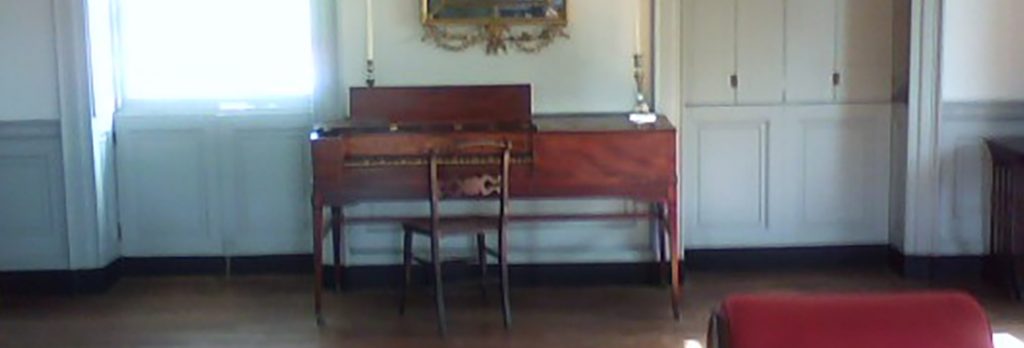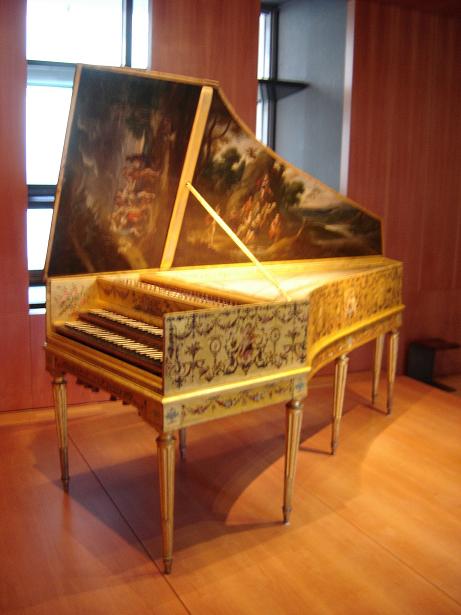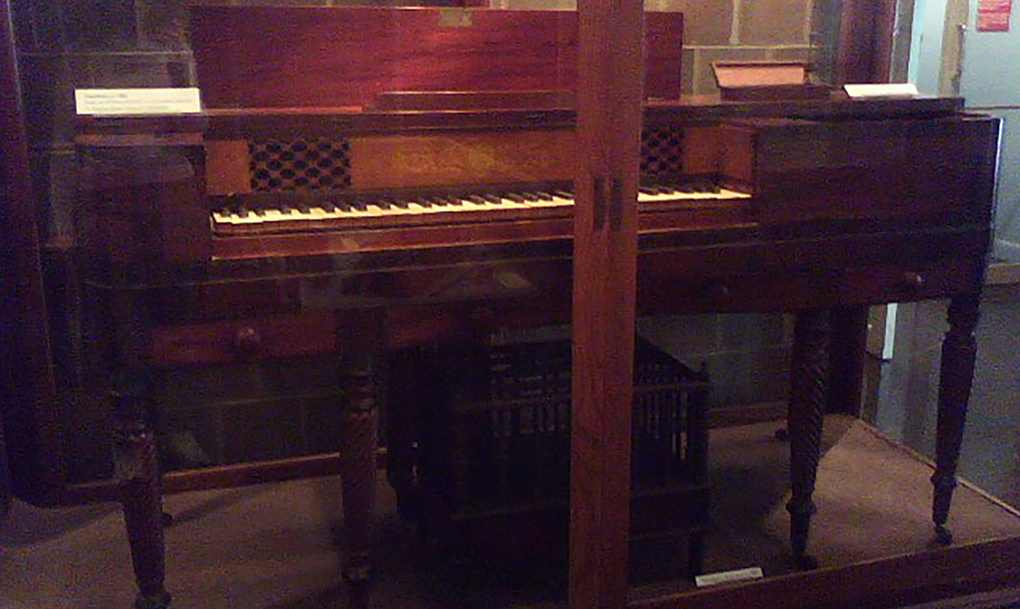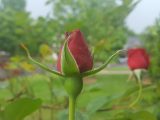People in the 19th century didn’t have radios, YouTube, or downloadable or live streaming music from the Internet. If they wanted any kind of music, they had to produce it themselves. Therefore, among those who could afford it, one could walk into almost any home and find a piano or a pianoforte, depending on the era–much like today you’ll find it rare to walk into a house and not find a TV. A young woman was expected to play the piano and it usually qualified as part of her studies.
The first photo below is of a mahogany square piano dated 1790. It was made by Charles Albrecht in Philadelphia. I apologize that the image isn’t better or up close. I took this image in the Joseph Manigault Museum House in Charleston, SC. The main photo above is of a pianoforte dating around 1816 at the Burgwin-Wright House in Wilmington, NC.

Pianos first originated from the clavichord and the harpsichord instruments. The clavichord was widely used through the Medieval period through the Renaissance era. It wasn’t as loud as the harpsichord, and therefore, it was mostly used as a practice instrument. The harpsichord is much larger as a winged shaped instrument with strings perpendicular to the keyboard. It was invented around the middle ages (abt. 1500). In the photo below, the harpsichord resembles an earlier version of our modern day grand pianos.


In the 1720’s Bartolomeo Cristofori of Italy invented what we know as the modern piano. It virtually replaced the clavichord and the harpsichord in many homes. Throughout the next century, many changes where invented and adapted to the modern piano. The below photo is of a pianoforte dated 1820. It is made by William Rolfe & Company in London and sold by Siegling Music House of Charleston, SC. I apologize for the lack of clarity. I snapped this photo through the glass at the Charleston Museum and I couldn’t use a flash.

This final photo is of a beautiful piano that is one of my favorite antiques. I love the unique carving of the wood. It was made in 1860 by Timothy Gilbert of Boston, MA. It belonged to Mary Jane Williams (1833-1904), wife of James Harvey Carlson. It was donated by their great-grandson and now sits in the Rosedale Plantation House in Charlotte, NC.

I love piano music and I often listen to Beethoven or Bach, Claude DeBussy or Peter Tchaikovsky when I’m writing my Regency and Victorian era novels. It helps put me in the mood and mindset of the period I’m writing about. I never got the opportunity to learn how to play the piano. So I’ll do the next best thing, keep pounding out my stories on my keyboard to the wonderful music that others have created and recorded. It’s ironic, but I suppose I was destined for a keyboard–just not the piano.




